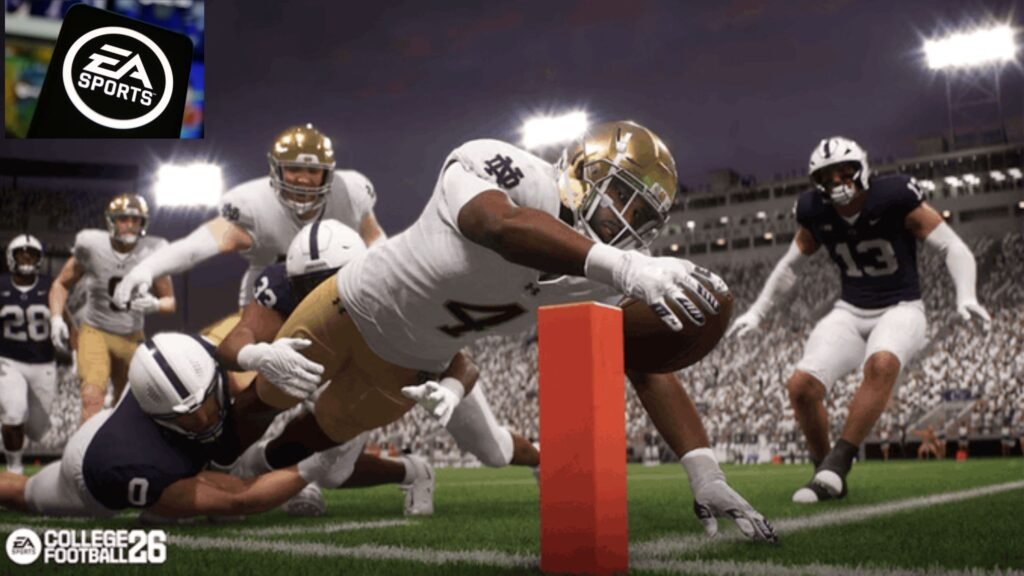EA Sports College Football 26 Isn’t Just a Game—It’s a Goldmine for College Programs
Mark your calendars and buckle up, college football fans—EA Sports College Football 26 is coming, and it’s about to turn the world of digital sports and NCAA economics completely upside down.
In a groundbreaking twist that feels more like a blockbuster movie plot than a video game release, EA Sports is offering more than just pixels and playbooks. This time, schools themselves—including juggernauts like Texas A&M—stand to cash in on their digital dominance. Yes, you read that right: real money for real schools, all based on how often gamers choose to rep their favorite teams on-screen.
Gamers Hold the Power—And Schools Will Feel the Impact
With just 33 days left until the long-anticipated launch on Thursday, July 10, the hype surrounding College Football 26 is nothing short of electric. But now, thanks to new reporting by cllct’s Matt Liberman, we’ve learned that EA is taking the franchise where no sports video game has gone before—straight into the vault.
For the first time ever, all 136 FBS programs included in the game will earn a slice of the financial pie. The more popular a school is among players—meaning the more frequently users choose to play as that team—the bigger that school’s payout. We’re talking cold, hard royalties, not digital tokens or empty kudos.
It’s a revolution in gaming economics—and one that could reshape the relationship between college athletics and the billion-dollar video game industry.
$5 Million for Playing Favorites? It’s More Than a Game Now
Documents obtained via the Freedom of Information Act by cllct reveal stunning projections: if players rack up 700 million total games, a school could rake in up to $5 million if they represent a significant chunk of that total. Even a modest total of 7 million games played as one school could net a program $50,000 in royalties. That’s real revenue, not theoretical fluff.
And where’s this money coming from? The royalty structure is being funneled through CLC Learfield, a massive collegiate licensing organization that, until recently, seemed skeptical about cutting schools in on the action. But now? They’ve pivoted with force, and their official language confirms it:
“For each CFB product released by EA SPORTS, we (CLC Learfield) will provide a percentage based on the games played for that institution as a percentage of the total games played across all institutions. This percentage… will become the final allocation percentage for each school.”
Translation? If your school is hot in the game, it’s going to be hot at the bank.
A Digital Arms Race Begins—Who Will Rise, Who Will Get Left Behind?
This isn’t just a win for powerhouse programs like Alabama, Texas, or Ohio State. It’s a battlefield of popularity, and even underdog schools now have a reason to rally their fanbases like never before. Expect social media campaigns, influencer pushes, and even coordinated gaming drives from athletic departments hungry for that digital cash.
Texas A&M, with its rabid fan base and strong recruiting classes, is in prime position to capitalize on this new era. If Aggie fans show up in full force on release day and beyond, the university could see a serious boost to its bottom line—all from people simply playing their favorite team in a virtual stadium.
Screenshot Leaks Fuel the Frenzy
Adding gasoline to the hype fire, screenshot leaks from College Football 26 have already been circulating online. Social media is ablaze with early peeks at the game’s jaw-dropping visuals, next-level presentation, and what insiders claim is the most authentic college football experience ever coded.
The clock is ticking, the competition is fierce, and the stakes are suddenly higher than ever—not just for players, but for the institutions themselves.
EA Sports College Football 26: More Than a Game—A Cultural Shift
This is no ordinary reboot. EA Sports isn’t just resurrecting a beloved franchise—they’re launching a revolution in sports gaming, media rights, and collegiate finance. By marrying nostalgia with modern economics, they’ve created a product that could reshape how schools view their virtual brand presence.
It’s part game, part social movement, part economic experiment—and whether you’re a diehard fan, a college administrator, or just someone who loves a good underdog story, you’ll want to be paying very close attention.
Come July 10, the controller is in your hands. The revenue is on the line. The leaderboard isn’t just about winning games—it’s about determining which schools dominate the digital age.
Who will reign supreme in the world of College Football 26? Only time (and millions of button presses) will tell.

